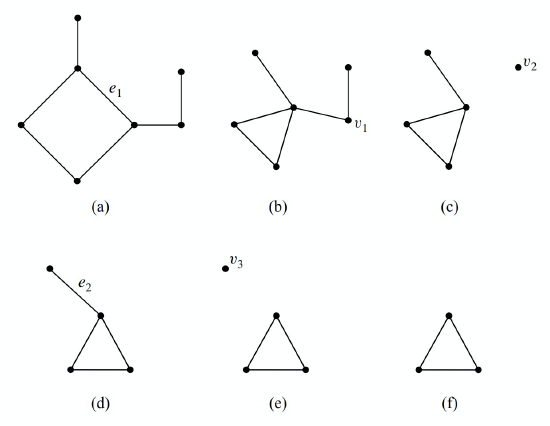12.8: Another Characterization for Planar Graphs
- Page ID
- 48384
We did not pick \(K_5\) and \(K_{3,3}\) as examples because of their application to dog houses or quadrapi shaking hands. We really picked them because they provide another, famous, discrete characterizarion of planar graphs:
Theorem \(\PageIndex{1}\)
(Kuratowski). A graph is not planar if and only if it contains \(K_5\) or \(K_{3,3}\) as a minor.
Definition \(\PageIndex{2}\)
A minor of a graph \(G\) is a graph that can be obtained by repeatedly4 deleting vertices, deleting edges, and merging adjacent vertices of \(G\).
For example, Figure 12.16 illustrates why C3 is a minor of the graph in Figure 12.16(a). In fact C3 is a minor of a connected graph G if and only if G is not a tree. The known proofs of Kuratowski’s Theorem 12.8.1 are a little too long to include in an introductory text, so we won’t give one.

4The three operations can each be performed any number of times in any order.


